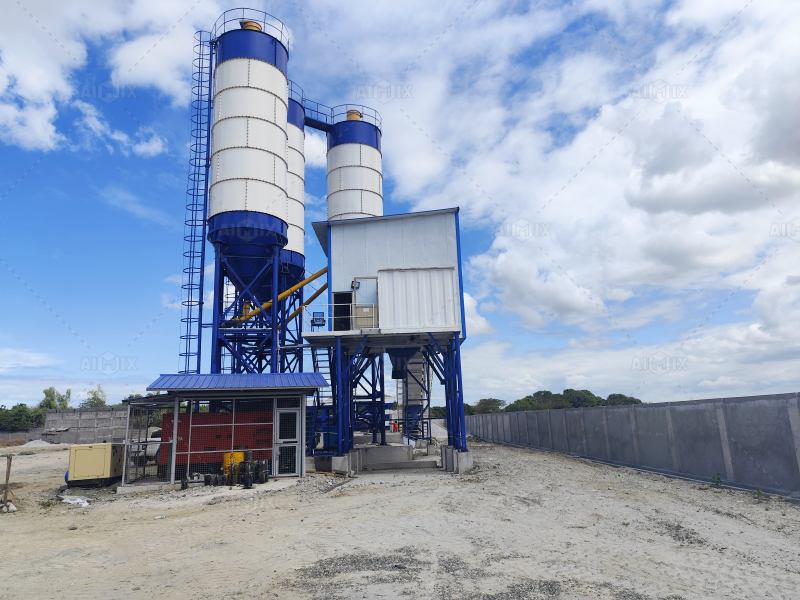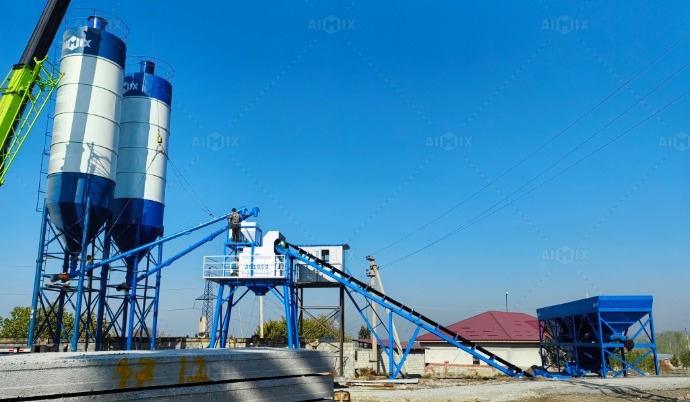The construction industry is undergoing a digital revolution, and concrete production is no exception. Traditionally, batching plants were mechanical systems reliant on manual monitoring and adjustment. Today, thanks to the rise of the Internet of Things (IoT), concrete batching plants are becoming smarter, faster, and more efficient than ever before. But what exactly is a concrete plant with IoT integration? And how does it redefine the concept of “smart batching”?
Let’s explore how IoT is reshaping the modern concrete plant and why forward-thinking contractors, precast producers, and infrastructure developers are embracing this innovation.

What Is a Concrete Plant?
What is a concrete plant? A concrete plant also known as a concrete batching plant, is an industrial facility used to manufacture concrete by combining various ingredients—cement, water, sand, aggregates, and admixtures—in precise proportions. The goal is to produce consistent, high-quality concrete suitable for structural use in buildings, bridges, roads, and other projects.
There are various types of concrete plants, including stationary, mobile, dry mix, and wet mix variants. Each plant typically includes key systems such as:
-
Aggregate storage and feeding
-
Cement and additive dosing
-
Water supply and metering
-
Mixing system (twin-shaft mixer or drum mixer)
-
Control and monitoring system
In traditional setups, the control system may be semi-automated or even manual. But as construction moves toward digitization, concrete plants are evolving to incorporate real-time data monitoring, automation, and interconnectivity. That’s where IoT integration comes in.
What Is IoT Integration in a Concrete Plant?
IoT (Internet of Things) refers to a network of interconnected devices that collect, transmit, and act on real-time data. When applied to concrete plants, IoT means:
-
Sensors on silos, belts, mixers, and moisture probes
-
Connectivity between plant hardware and cloud-based control systems
-
Real-time alerts and performance dashboards
-
Predictive maintenance and automatic quality adjustments
In essence, an IoT-integrated concrete plant is a digital, self-aware system that continuously tracks its own performance and automatically adjusts operations to optimize output.

How Smart Batching Works in an IoT-Enabled Plant
Here’s how a smart batching cycle works when IoT is fully integrated:
-
Real-Time Sensing
Sensors monitor aggregate moisture levels, temperature, cement levels, mixer torque, and water flow. This ensures every batch adjusts to current material conditions. -
Automated Adjustments
Based on sensor data, the control system adjusts water-cement ratios, mixing times, or batching sequences—ensuring consistent concrete quality. -
Cloud Connectivity
Data is sent to a cloud dashboard, where plant managers can view live status, batch logs, and performance KPIs from any location. -
Remote Operation
Operators can start, stop, or modify batching cycles from mobile devices, reducing on-site personnel requirements. -
Predictive Maintenance
The system analyzes wear patterns on motors, bearings, and mixers, triggering maintenance alerts before breakdowns occur. -
Automated Reporting
Daily production reports, QC logs, and compliance documents are generated and sent automatically, improving traceability and project accountability.
Benefits of IoT in Concrete Batching Plants
1. Improved Concrete Quality
Smart batching adjusts material ratios in real-time, reducing variability and ensuring every batch meets spec—especially important in high-strength or precast concrete applications.
2. Higher Efficiency
Automation minimizes delays, idle time, and material waste. IoT-driven plants can also achieve faster batching cycles and reduced cement overuse.
3. Reduced Human Error
Manual weighing, measuring, and timing introduce risks. IoT eliminates guesswork by relying on sensor-verified data.
4. Remote Monitoring and Control
Plant supervisors can track production from mobile devices, issue commands, and troubleshoot without being physically on-site—ideal for remote or multi-site operations.
5. Data-Driven Decision Making
Historical data reveals trends in performance, maintenance, and material usage, allowing smarter business and operational decisions.
6. Predictive Maintenance
Downtime can cost thousands per hour. IoT systems notify operators of potential issues before failure occurs, maximizing plant uptime.
Smart Batching in Action: Real-World Applications
Several large-scale contractors and precast manufacturers are already reaping the benefits of IoT-enabled batching:
-
Precast concrete factories use smart batching to ensure tight quality control across large volumes of daily production.
-
Remote project sites, like dams or bridges, use mobile IoT batching plants to monitor concrete production from headquarters.
-
Government contractors use IoT reports to satisfy increasingly strict compliance and traceability regulations in infrastructure work.
Whether stationary or mobile, the addition of IoT transforms a traditional concrete batching plant into a lean, intelligent, and responsive production unit.

The Future of IoT in Concrete Plants
As construction continues to digitalize, the trend toward Industry 4.0 will further shape the evolution of batching plants. Upcoming innovations may include:
-
AI-driven mix optimization
-
Real-time integration with building information modeling (BIM)
-
Drone-assisted inventory management
-
Blockchain-based quality certification for concrete batches
The goal: a fully automated and data-integrated construction ecosystem, from concrete mixing to final structure delivery.
Final Thoughts
So, what is a concrete plant with IoT integration? It’s not just a place where concrete is made—it’s a smart, self-optimizing system that ensures superior product quality, reduces costs, and improves efficiency across construction operations.
If you're looking for a concrete batching plant for sale, consider not just the size or type—but how smart it is. With IoT integration, your plant becomes a strategic asset, delivering consistent performance and unlocking the full potential of digital construction.